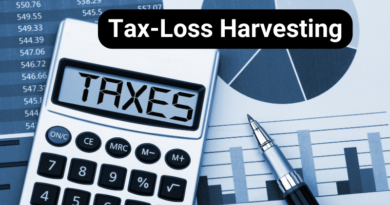How to Minimize Taxes on Retirement Income
1. Introduction
Importance of Tax Planning in Retirement
During retirement, managing taxes becomes a critical part of preserving your savings. Taxable withdrawals, Social Security benefits, and other income sources can significantly reduce your take-home retirement income if not managed wisely.
Purpose of the Blog
This guide explains actionable strategies to reduce your tax burden, ensuring you maximize your retirement savings and enjoy financial stability.
2. Understand Taxable Retirement Income
Sources of Taxable Income
- Social Security Benefits:
- Up to 85% of Social Security income can be taxable depending on your total income, known as provisional income.
- Traditional IRA and 401(k) Withdrawals:
- Fully taxable as ordinary income when withdrawn.
- Pensions and Annuities:
- Usually taxed as regular income unless contributions were made with after-tax dollars.
Non-Taxable or Tax-Advantaged Income
- Roth IRA Distributions:
- Withdrawals are tax-free, provided the account has been open for at least five years and you’re over 59½.
- Municipal Bond Interest:
- Income from these bonds is often exempt from federal (and sometimes state) taxes.
Tax Bracket Considerations
Understanding your tax bracket in retirement is essential. A higher taxable income may push you into a higher bracket, increasing the taxes owed on all other taxable sources.
3. Strategies to Minimize Taxes on Retirement Income
1. Diversify Retirement Accounts
Having a mix of taxable, tax-deferred, and tax-free accounts gives you flexibility in managing withdrawals.
- Tax-Deferred Accounts:
- Contributions to accounts like Traditional IRAs and 401(k)s are tax-deductible but withdrawals are taxable.
- Tax-Free Accounts:
- Roth IRAs and Roth 401(k)s allow tax-free withdrawals in retirement.
- Taxable Accounts:
- Income from dividends, interest, and capital gains is taxed annually but often at lower rates.
2. Optimize Social Security Benefits
- Delay Benefits:
- Postponing Social Security until full retirement age (or age 70) can increase monthly payments and reduce provisional income.
- Manage Provisional Income:
- Keep taxable income below the thresholds where Social Security benefits become taxable by using Roth withdrawals or managing other sources of income.
3. Plan Withdrawals Strategically
- Order of Withdrawals:
- Start with taxable accounts, move to tax-deferred accounts, and save Roth accounts for last to minimize taxes over the long term.
- Avoid Large Withdrawals:
- Taking out too much at once may push you into a higher tax bracket.
4. Take Advantage of Tax Deductions and Credits
- Medical Expense Deductions:
- Deduct qualified healthcare expenses exceeding 7.5% of your adjusted gross income (AGI).
- Standard vs. Itemized Deductions:
- Compare the benefits of both to determine which reduces your tax burden the most.
5. Consider Roth Conversions
- Benefits of Converting to a Roth IRA:
- Pay taxes upfront during low-income years to enjoy tax-free withdrawals later.
- Timing the Conversion:
- Convert gradually to avoid jumping into a higher tax bracket.
6. Use Qualified Charitable Distributions (QCDs)
- What Are QCDs?
- Donate directly from your IRA to a qualified charity to satisfy required minimum distributions (RMDs) without increasing taxable income.
- Eligibility:
- Available for individuals aged 70½ and older.
7. Manage Capital Gains and Losses
- Long-Term vs. Short-Term Gains:
- Long-term capital gains are taxed at lower rates than short-term gains.
- Harvesting Losses:
- Offset gains by selling underperforming assets to reduce taxable income.
8. Relocate to a Tax-Friendly State
- States With No Income Tax:
- Examples: Florida, Texas, and Nevada.
- States That Don’t Tax Retirement Income:
- Examples: Pennsylvania and Illinois.
9. Maximize Tax-Free Investments
- Municipal Bonds:
- Interest income is often exempt from federal and state taxes.
- Health Savings Accounts (HSAs):
- Use HSAs for tax-free withdrawals on qualified medical expenses.
4. Tools and Resources for Tax Planning
Tax Calculators
Use online calculators to estimate your retirement taxes and evaluate different scenarios for withdrawals and deductions.
Financial Advisors
Work with a certified financial planner or tax advisor to create a personalized retirement tax strategy tailored to your income sources and goals.
Tax Preparation Software
Programs like TurboTax or H&R Block can guide you through retirement-specific tax credits, deductions, and filing requirements.
5. Common Mistakes to Avoid
Overlooking RMDs
Failing to take required minimum distributions (starting at age 73 in 2023) can result in a hefty 50% penalty on the amount not withdrawn.
Ignoring Tax Bracket Changes
Large withdrawals from tax-deferred accounts can push you into a higher bracket, increasing taxes on Social Security and other income.
Underestimating Social Security Taxes
Many retirees fail to realize that Social Security benefits may be partially taxable, depending on their other sources of income.
6. Conclusion
Recap
Minimizing taxes on retirement income involves understanding taxable sources, strategically managing withdrawals, leveraging deductions, and using tax-advantaged accounts like Roth IRAs and HSAs.
Encouragement to Plan Early
Early planning can save thousands in taxes over the course of retirement. Regularly review your income strategy to ensure it aligns with changing tax laws and your financial goals.
Call to Action
Consult a financial advisor or tax professional to develop a customized tax strategy and secure your retirement income.


